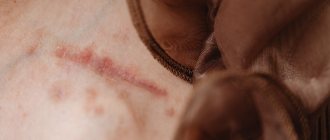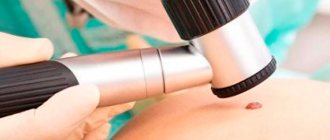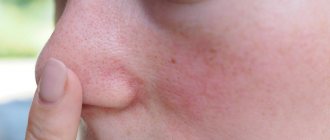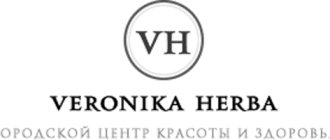Around the so-called “vascular cleansing”
A whole industry and many myths have developed.
However, our blood vessels are not pipes; even theoretically, cleaning them to get rid of cholesterol plaques or calcium deposits is not at all so simple. Does “vascular cleaning” even exist, or is it a misconception and a marketing ploy? We talked with our expert - cardiologist, functional diagnostics doctor, candidate of medical sciences Anna Nikolaevna Kotelnikova
, to learn more about the prevention and treatment of atherosclerosis.
On the eve of the New Year and the festive feast, be attentive to your diet and take care of yourself!
Vessel cleaning - what is it?
In official medical terminology, there is no such thing as “cleaning blood vessels” - this is everyday slang that is misleading and creates confusion. Unfortunately, it is impossible to remove cholesterol plaques that have already formed and clean a clogged vessel like a water pipe using a magic cleaning agent or “nanothreads”. An entire industry has already formed around the cleaning of blood vessels, however, the drugs and procedures that are offered to solve the problem do not have proven clinical effectiveness, the same applies to traditional methods. Restoring the functional state of the vascular endothelium is much more serious than detox, which is only appropriate for the primary prevention of vascular blockage. With atherosclerosis, when the vessels are narrowed by less than 50%, there is a risk of blood clots, heart attack or stroke
, the doctor prescribes drug therapy (
statins
,
calcium antagonists
and other drugs). However, they do not remove plaques, but compact them, thus increasing the lumen of the vessel. Therefore, it is extremely important to adhere to simple recommendations for the prevention of atherosclerosis.
In colloquial language, “cleaning” is also called cardiac surgery to expand a dangerously narrowed vessel - angioplasty, bypass surgery, stenting
. Their methods differ, but the essence is approximately the same: a catheter is inserted into the vessel, and the damaged, pathologically narrowed area is straightened and strengthened from the inside using implants - special rings, springs or tubes. The need for such operations arises if an atherosclerotic plaque closes the lumen of the vessel (artery) by more than 50%. When the blood supply is so disrupted, cells and organs are not supplied with oxygen and nutrients, and a person’s life can hang by a thread. It happens that a vessel or artery is blocked by a blood clot - a person suddenly feels very tired to the point of loss of consciousness, rapid heartbeat, suspicious pain (headaches, in the area of the heart), suffocates, and the skin turns pale. Such conditions are considered acute, and as a “cleansing” procedure, thrombolysis with special drugs is used on an outpatient basis. After stenting, bypass surgery or angioplasty, blood supply is restored, but it is necessary to take special medications and be observed by a cardiologist.
How the problem manifests itself
If the body is affected by atherosclerosis, then the accumulation of cholesterol will be observed in almost all arteries and vessels. But the manifestations are more often local and depend on the location of the stenotic artery - such symptoms are shown in the photo and posted on websites dedicated to atherosclerosis.
Since many years may pass from the onset of the development of pathology to the appearance of severe symptoms, you need to be aware of the primary signs of atherosclerosis: the appearance of weakness that is not associated with excessive stress and fatigue, a feeling as if “goosebumps are running along the leg, arm or thoracic region,” sudden in a stupor, a feeling of numbness, disturbing on one side of the body - in the arm or leg.
All manifestations of the presence of cholesterol plaques in blood vessels come down to a slowdown in blood flow in the affected area, lack of nutrients and oxygen
Visual impairment also occurs in one eye, the second, as a rule, sees well, and problems with speech and memory - the person becomes forgetful, confuses dates and events, and begins to speak inarticulately. If the formations constantly increase in volume and interfere with the full blood supply to the organ, then pain will be present in this part of the body.
The skin becomes numb, and a constant tingling sensation appears. The symptoms listed above are observed if the plaque has disintegrated and its particles move along the bloodstream. Here, the risk of cerebral hemorrhage and heart attack increases significantly.
Plaques in the thoracic aorta
The main symptoms of cholesterol deposits in the thoracic region are sharp nagging pains near the heart. They radiate towards the neck, shoulder blade, shoulder girdle and upper limb, and the discomfort cannot be relieved by taking Nitroglycerin.
Severe symptoms appear: pain in the head, pallor or bluishness of the skin on the face, decreased performance, a constant feeling of fatigue, problems with reproducing recent events, forgetfulness and inattention, convulsions, fainting or clouding of consciousness. During the period of exacerbation of thoracic atherosclerosis, the patient's blood pressure rises, he complains of shortness of breath and other symptoms of ischemia.
Damage to the blood vessels of the head
If the vessels of the brain are affected by atherosclerosis, then we are talking about the deposition of cholesterol plaques in the CCA (common carotid artery), subclavian and the mouth of the ICA (internal carotid artery). They nourish the brain tissue, therefore, the disease manifests itself in a number of negative disorders:
- decline in performance;
- fatigue and constant fatigue;
- memory losses;
- tendency to depression;
- the appearance of unreasonable fears and worsening anxiety;
- disruptions in visual and auditory functions;
- bleeding in the brain with typical consequences - failure of one of the body parts, neurological disorders, loss of speech or motor function.
Blockage of the paravertebral, subclavian and carotid arteries appears gradually. In the initial stages, a person becomes inattentive, gets tired quickly, and cannot cope with the usual amount of work. Next comes a depressive state, which is not justified.
In the last stages of the disease, when the brain is practically not supplied with oxygen and blood, the patient is lost in space, does not remember events, and acquires signs of dementia. The case may result in a stroke with all the ensuing consequences, including disability or death.
In the peritoneal area
When the abdominal artery is blocked, atherosclerosis manifests itself in a number of symptoms:
- lack of appetite, sudden weight loss;
- aching pain around the navel;
- constant bloating, problems with bowel movements;
- feeling of coldness and numbness in the legs;
- swelling of the tissues of the lower extremities.
In the later stages, intermittent claudication occurs - a person’s leg seems to fail, and as a result, he or she limps when moving.
Atherosclerosis of the lower extremities
The disease remains asymptomatic for many years. In the second and later stages, a person begins to notice constant fatigue in the legs, even in the absence of significant physical activity.
The last stages of the pathology are characterized by hair loss on the skin of the legs in the shin area, the appearance of trophic ulcers and ulcers. The toes may turn red and take on a dark tint, this is due to a lack of blood supply and the gradual death of cells.
Why do blood vessels become clogged?
Vessels become blocked for various reasons, but most often this occurs due to cholesterol plaques and the deposition of calcium salts (calcinosis). The mechanism for the formation of such blockages is more complex than it seems, and it lies behind our everyday habits - even the most harmless at first glance. For example, when we eat highly salty foods
, blood thickening and fluid retention occur - blood pressure increases.
When we experience stress
, the hormones adrenaline and norepinephrine are produced - key vessels narrow, and pressure increases because the amount of blood that the heart needs to push remains unchanged. In a normal healthy state, the vessels cope with such loads, but over time, serious problems can begin, and this is not only hypertension.
Causes of atherosclerosis
The fact is that due to systematic additional loads, microdamages can form on the walls of the arteries. Damaged tissues swell. Cells that respond to inflammation (for example, white blood cells) accumulate around the damage, and fat and cholesterol that float in the blood also cling to them - a cholesterol plaque is formed. It is no longer possible to get rid of it using completely non-invasive methods. At the same time, the walls of the vessels become coarser and thinner - this pathological condition is called atherosclerosis, which in turn can lead to coronary artery disease and causes the need for “cleansing of blood vessels”.
Thus, it is important not only to eat right, but also to maintain the functional state of the cardiovascular system.
Good and bad cholesterol
There are several types of lipoproteins (cholesterols). Low-density lipoproteins
(LDL)
are considered bad , but there is also a good one -
high-density lipoproteins (HDL)
. The latter works almost as an antagonist of bad cholesterol, allows you to control lipid metabolism - helps in transporting substances and detoxifying the body from bad cholesterol. Below we will tell you how to maintain the correct LDL-HDL balance and what else you need to pay attention to.
Prevention of vascular atherosclerosis
Avoid foods with high cholesterol levels
Limit animal products with high cholesterol content in your diet: lard, fatty meat, offal, fatty dairy products and whole milk, egg yolk. This does not mean that you need to completely abandon animal proteins and fats. The menu should be dominated by vegetables and fruits, complex carbohydrates and cereal fibers, especially fiber. It is important to control sugar levels and not overindulge in sweets and starchy foods - it is better to replace chocolate bars and snacks with dried fruit sweets and nuts, and your body will thank you.
The method of preparing dishes also plays an important role
- before you put meat or scrambled eggs in oil on a hot sizzling frying pan, think about whether it might be better to steam it? It is forbidden? Okay, but for frying it is better to use vegetable oils, such as olive oil.
Citrus fruits also fight fat and cholesterol
, in particular the substance pectin, isolated from
grapefruit
.
Pectin
is a soluble fiber that is found only in citrus fruits themselves, but not in juice.
We get cholesterol from 2 main sources. Most of the cholesterol (about 1 g per day) is produced by our liver - and this is enough.
We get the other part directly from food.
There is another life hack: pay attention to labels in the store, try to avoid products labeled “partially hydrogenated fats”
.
Play sports - train your heart and blood vessels
WHO recommends at least 150 minutes of physical activity per week.
During training, the body is detoxified, and the blood vessels are strengthened - this is also a kind of “cleansing of blood vessels.”
Even after undergoing stenting/bypass surgery, you can play sports and even run a marathon. However, such patients first need to take medications for quite a long time and be observed by a doctor. Patients with cardiovascular diseases need to calculate the permissible level of physical activity and select its optimal option. bicycle ergometry is for.
, which allows you to take stress tests on a device similar to a bicycle with special sensors.
Check your cholesterol levels
Once a year, it is recommended to take a special blood test - a lipid profile - to see if there is an increase in the level of total cholesterol or its fractions. In this way, it is possible to understand in a timely manner whether everything is fine with lipid metabolism or whether drug correction is necessary.
Primary prevention of atherosclerosis and blockage of blood vessels also involves visiting a therapist or cardiologist once a year, even if there are no complaints.
Treat periodontal disease, control sugar levels and body weight
Everything in our body is interconnected. It has been proven that patients with periodontal disease, like patients with diabetes and overweight, are more predisposed to atherosclerosis.
In 2022, the study “Metabolic syndrome and periodontal disease: An overview for physicians”
(Srivastava MC, Verma PK) with important and very interesting conclusions. In patients with poor teeth and a predisposition to atherosclerosis, intensive periodontal therapy after 2 months showed a significant reduction in the levels of c-reactive protein, interleukin-6 and low-density lipoprotein cholesterol.
Measure your blood pressure
The absolute norm for blood pressure in an adult is considered to be 120/80 mmHg, but depending on the individual characteristics of the body, deviations are possible.
Monitor calcium levels and nutrient balance in the body
It is recommended to take additional Omega-3
- the body does not synthesize these beneficial fatty acids on its own - and you need to eat a lot of seafood and season salads only with flaxseed oil to make up for this deficiency. Omega 3 polyunsaturated fatty acids are the basis not only for strong and clean blood vessels, but even a building material for the brain. The average adult is recommended to consume 250 mg of Omega 3 per day throughout his life.
Vitamin K3
prevents calcium from being washed out of the bones and deposited on the walls of blood vessels. Most K₂ is found in fermentation products: cheese and fermented milk products.
Vitamin D and C, coenzyme Q10 are also extremely important for blood vessels
Stay hydrated, give up bad habits and get enough sleep
Drink clean filtered water throughout the day - about 1.5 liters.
The permissible amount of alcohol per day, which does not harm your heart and blood vessels, is 1 glass of good quality red wine; it is better to completely give up smoking.
You can get the maximum benefit from sleep if you sleep for 7-8 hours in a comfortable environment, without light or gadgets, and wake up only with or without an alarm clock.
The danger of plaque deposits and methods of diagnosis
It is difficult for doctors to make predictions regarding the consequences of the accumulation of atherosclerotic plaques in blood vessels. This depends on the duration of the disease, clinical manifestations, and the location of the clogged arteries. When brain tissue is damaged, the consequences are stroke and transistor attack.
In more rare cases, the patient develops memory loss and dementia. If the aorta (chest and peritoneum) is damaged, gangrene of the leg, death of intestinal tissue or its obstruction, and aortic aneurysm may develop. To avoid such serious consequences, you need to pay timely attention to the diagnosis of atherosclerosis.
It is not worth repeating that if a large part of a blood clot breaks off and gets into a small capillary, especially one located close to the heart, a person can die instantly. To detect the presence of atherosclerotic plaques in the body, the following methods are used:
- external examination of the patient;
- interview and further collection of anamnesis - it turns out that the patient has addictions, his nutrition, physical activity, body weight and hereditary predisposition to atherosclerosis are assessed;
- blood test for the content of lipids, lymphocytes and other biochemical components;
- Ultrasound scanning of blood vessels - allows you to assess the structure of capillaries and the completeness of the blood supply to tissues;
- X-ray of the aorta - helps to detect calcification, expansion of the aortic window in the early stages;
- angiography using a contrast agent - specialists check the patency of blood vessels and assess the level of stenosis.
Other techniques, such as computed tomography or magnetic resonance imaging, are used on the recommendation of a doctor if it is necessary to clarify the location of deposits, the structure of plaques and the stage of the disease.
During diagnosis, it is important to distinguish manifestations of atherosclerosis from other diseases accompanied by similar symptoms
Damage to cerebral vessels by plaques should be separated from syphilis of the brain, injuries and neurological disorders. If the aorta is affected, a differentiated diagnosis is carried out to distinguish it from pathologies of the peritoneal organs. Blockage of blood vessels in the legs must be separated from varicose veins and post-traumatic conditions.
Women and men over 40 years old
Patients in the older age group should be especially attentive to the state of the cardiovascular system and the primary prevention of atherosclerosis. Statistically, men are more susceptible to this disease, and hormones play an important role in this.
During the reproductive period, a woman’s ovaries produce sexual estrogens, which regulate the content of fats in the blood and prevent the deposition of cholesterol on the walls of blood vessels, that is, they protect the woman’s body from atherosclerosis.
During menopause, ovarian function declines, they stop producing estrogen, and its content in the blood drops sharply. This leads to the fact that cardiovascular diseases in women after menopause appear 5 times more often than before it.
Therefore, at this age it is recommended to consult a gynecologist-endocrinologist.
, who may prescribe menopausal hormone therapy if necessary. MHT can not only improve the quality of life and prolong it, but also preserve beauty from the inside.
Doctors at the Cardiology Center of the Pirogov Clinic provide qualified assistance to patients in the treatment of atherosclerosis, preventive diagnostics, as well as recovery after stenting, bypass surgery, and a heart attack.
You can make an appointment with a cardiologist or directly with Dr. Anna Nikolaevna Kotelnikova through our website.
Treatment methods
Treatment of atherosclerosis should begin in the early stages. It is impossible to completely remove atherosclerotic plaques, but it is possible to reduce their volume and soften the structure. Provided that the patient follows medical recommendations and undergoes all necessary procedures.
General principles
First, you should change your lifestyle - give up bad habits, quit smoking and minimize alcohol consumption. Blockage of blood vessels will not disappear on its own, but to maintain the condition of the blood vessels, it is necessary to engage in physical exercise, spend more time in the fresh air, and reduce body weight.
Without following a diet, the fight against atherosclerotic plaques will be unsuccessful. It is worth giving up foods rich in cholesterol - cocoa, chocolate, animal fats, high-fat milk, offal, eggs. And you should also limit the consumption of baked goods, carbonated drinks, pure sugar and salt.
Set of products allowed for consumption:
- nuts;
- beans, legumes;
- berries;
- cabbage (broccoli, white cabbage, cauliflower, sea cabbage);
- greens - dill, spinach, parsley, celery;
- citrus;
- zucchini and eggplant;
- green tea in unlimited quantities.
These products are rich in Omega 3 acids, iodine and vitamins B, C, A. That is why they are so useful to consume. When the flow of ascorbic acid into the body is established, the vessels restore their tone and are less subject to changes.
Procedures such as general massage, acupuncture, and therapeutic exercises help relieve vascular spasm. You can engage in light sports - swimming, walking, jogging. Against the backdrop of proper nutrition, quitting smoking and alcohol, physical therapy sessions and sports will help significantly improve the patient’s quality of life.
Taking medications
Drug treatment of atherosclerosis is based on taking drugs from the following groups:
- statins - Pravastatin, Atorvastatin, Simvastatin (normalize the amount of cholesterol in the blood, controlling its production by the body itself;
- capillary dilating agents - Pentilline, Pentoxifylline;
- drugs that improve blood circulation - Cilostazol;
- lowering cholesterol levels, in addition to statins - fibrates Ciprofibrate, Clofibrate;
- vitamin complexes – Aevit, Ascorutin, Ascorbic acid;
- derivatives of nicotinic acid.
The dosage, necessary medications, course of administration - all this is determined by the attending physician. Self-medication is dangerous due to the development of side effects and complications, since statins and fibrates can negatively affect liver function if not treated correctly.
Surgical treatment
The operation is indicated in severe cases of atherosclerosis, when the disease threatens the health and life of the patient. Stenting is the operation most often performed for problems with blood vessels. Under the control of an angiograph, a balloon with a stent is inserted into the affected area of the body directly into the artery. With the help of gas, the stenotic vessel expands, then a stent is installed there, which will maintain normal blood circulation and prevent the capillary from narrowing again.
Coronary artery bypass surgery - allows you to resume blood flow impaired by blockage. A bypass path of blood supply is created, avoiding completely blocked vessels. For a shunt, a healthy capillary is taken, for example, from the femoral area. If the plaques have completely blocked the lumens of the arteries in the legs, and the limb is already affected by gangrene, the necrotic part is amputated.
If plaques no longer resolve on their own, even with lifestyle changes and diet, doctors may recommend a type of surgery










